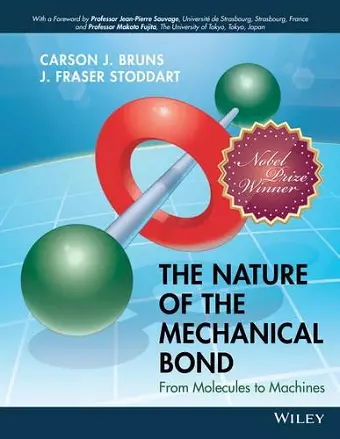The Nature of the Mechanical Bond
From Molecules to Machines
J Fraser Stoddart author Carson J Bruns author
Format:Hardback
Publisher:John Wiley & Sons Inc
Published:16th Dec '16
Currently unavailable, and unfortunately no date known when it will be back

"The story is told by THE inventor-pioneer-master in the field and is accompanied by amazing illustrations... [it] will become an absolute reference and a best seller in chemistry!"
—Alberto Credi
"... the great opus on the mechanical bond. A most impressive undertaking!"
— Jean-Marie Lehn
Congratulations to co-author J. Fraser Stoddart, a 2016 Nobel Laureate in Chemistry.
In molecules, the mechanical bond is not shared between atoms—it is a bond that arises when molecular entities become entangled in space. Just as supermolecules are held together by supramolecular interactions, mechanomolecules, such as catenanes and rotaxanes, are maintained by mechanical bonds. This emergent bond endows mechanomolecules with a whole suite of novel properties relating to both form and function. They hold unlimited promise for countless applications, ranging from their presence in molecular devices and electronics to their involvement in remarkably advanced functional materials. The Nature of the Mechanical Bond is a comprehensive review of much of the contemporary literature on the mechanical bond, accessible to newcomers and veterans alike. Topics covered include:
- Supramolecular, covalent, and statistical approaches to the formation of entanglements that underpin mechanical bonds in molecules and macromolecules
- Kinetically and thermodynamically controlled strategies for synthesizing mechanomolecules
- Chemical topology, molecular architectures, polymers, crystals, and materials with mechanical bonds
- The stereochemistry of the mechanical bond (mechanostereochemistry), including the novel types of dynamic and static isomerism and chirality that emerge in mechanomolecules
- Artificial molecular switches and machines based on the large-amplitude translational and rotational motions expressed by suitably designed catenanes and rotaxanes.
This contemporary and highly interdisciplinary field is summarized in a visually appealing, image-driven format, with more than 800 illustrations covering both fundamental and applied research. The Nature of the Mechanical Bond is a must-read for everyone, from students to experienced researchers, with an interest in chemistry’s latest and most non-canonical bond.
"This book will serve very well to inform any chemist or chemistry student curious as to the workings of molecular topology and the molecular machines that depend upon it, and should be read by anyone seeking to enter these fields. The writing is elegant and at times playful-thoroughly enjoyable to read. This book will certainly occupy pride of place in my research group' library."
Angewandte Chemie International Edition, 8th December 2016
"The book contains numerous schemes and illustrations of high quality. These facilitate the visualization of the molecular structures and of the chemical and dynamical processes. Each chapter contains approximately 500 to 1500 references and the book presents a total of 3400 unique references which corresponds to the main publications in this research domain. Undoubtedly, the book will be a most useful tool for all researchers interested in mechanically interlocked molecules ... One can anticipate, I believe, that The Nature of the Mechanical Bond will open new horizons for generations of readers and will stimulate the creativity of many architects of matter who wish to design more and more fascinating molecular systems."
Acta Cryst, November 2017
ISBN: 9781119044000
Dimensions: 282mm x 221mm x 43mm
Weight: 2359g
784 pages